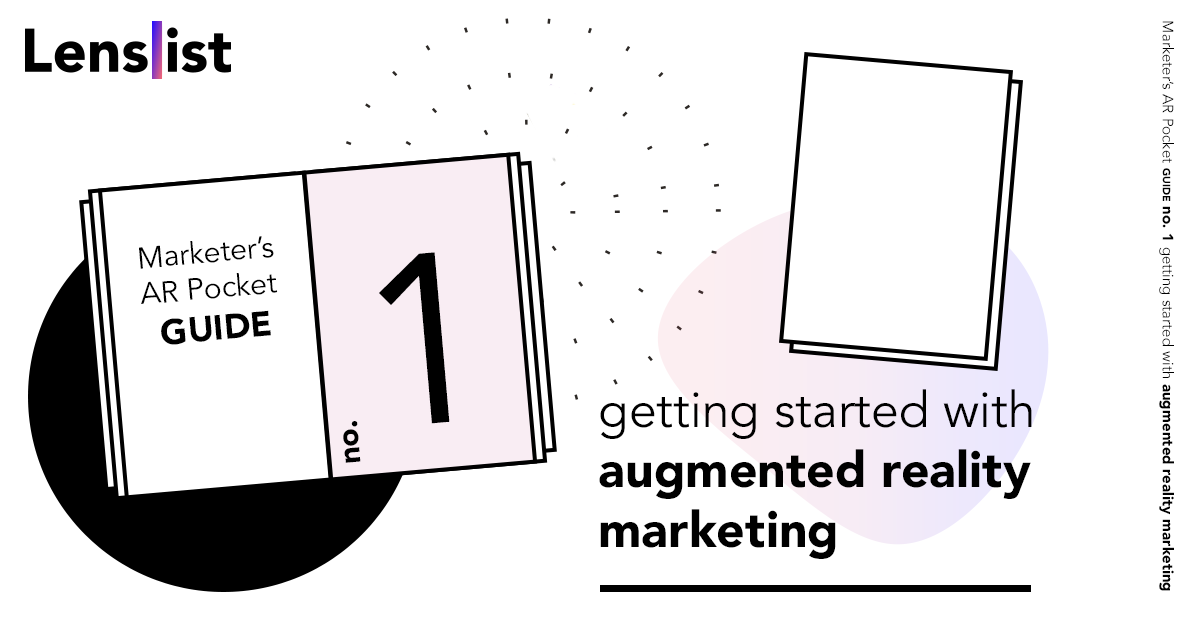Getting Started with Augmented Reality Marketing

Augmented Reality (AR), is a technology that puts a computer-generated image over a user’s view of the real world, thus enhancing or changing it in a particular way. Unlike VR, it doesn’t replace the real world completely but interacts with it instead. It has already been used in medicine, military or factories. A few years ago, however, Snapchat and Pokemon Go contributed to the increase in popularity of the use of this technology in entertainment. As a result, the world of digital marketing has never been the same again. In fact, it is now fairly impossible to create social media without any knowledge of AR. This is why we introduce you to Marketer’s AR Pocket Guide.
Augmented Reality in digital marketing
Until the expected future development of AR glasses, smartphones are the main medium for AR entertainment. As there are two cameras on every mobile phone, there are also two basic types of AR effects. First are those used within the front camera, interacting and altering users’ faces. Second are used in the rear camera, augmenting filters, 3D objects or portals into the real world. The first, famous examples of Snapchat Lenses were pet ears added to one’s face. By now, you can find a vast variety of branded AR effects engaging their audiences in different ways, eg. by letting them become their favourite movie character or catching food with their mouth in an AR contest with real prizes.
Pedigree Facebook Camera Effect & Madiba Snapchat Lens by Pixel Chefs
Social Media AR Platforms: Facebook, Snapchat, (Instagram)
At this moment, the two main mediums for using AR in marketing are Facebook and Snapchat. Independent creators and studios develop Facebook Camera Effects or Snapchat Lenses in order to engage the audiences of their clients. For almost a year now, Facebook’s Spark AR Studio makes it possible to create AR effects for Instagram, too, but as it’s still in beta phase, so no branded effects are allowed yet. When the beta is over, though, Instagram has a chance to become THE place to engage brands’ and influencers’ audiences with Augmented Reality. In the same time, Snapchat remains a perfect choice for those markets where the app is still very popular, eg. in the US.

Is it worth it?
Keeping it short and to the point: most of the global brands have already used Augmented Reality in their marketing strategies and the trend is on the rise. It brings an unmatched level of interaction and engagement to digital marketing so the audiences can relate to the brand in new, creative ways. AR works especially well for brands that want their fans to try something on, eg. a makeup. What’s more, choosing Facebook or Snapchat lets brand managers present AR to the audiences that are already available there instead of developing an app that needs further advertising. So, if your brand or your client’s brand is using social media, you may also think about adding something new and fun, following brands which we’re using as examples below.
Tune in for the next Marketer’s AR Pocket Guide Entries
In the future articles, we will dive into specifics. Hence, we will provide you with everything that a marketer should know before making AR a part of their strategy. This includes coming up with a good idea for the effect, its release, distribution and campaign’s results. Follow us on Facebook or Twitter to be up to date with our Marketer’s AR Pocket Guide. The next one will explain the basics of Instagram Camera Effects: how they work and how to use and publish them.
